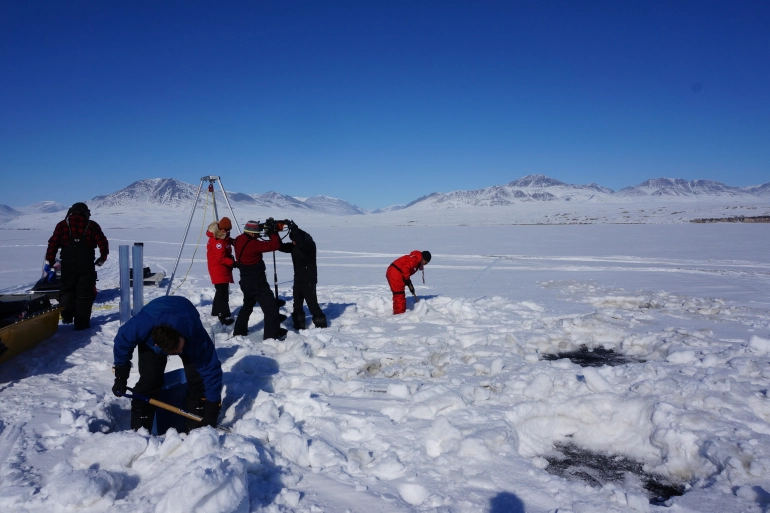According to recently released research, a warmer climate could increase the risk of “viral spillover” by exposing viruses in the Arctic to new settings and hosts.
In order to reproduce and spread, viruses need hosts like people, animals, plants, or fungi. Occasionally, though, they might jump to a new host that is immune, as was the case with the COVID-19 pandemic.
By investigating samples from the northern terrain of Lake Hazen, Canadian scientists sought to learn how climate change would impact spillover risk.
Researcher Graham Colby, who is currently a medical student at the University of Toronto, told the AFP news agency that it is the largest lake in the world that is totally north of the Arctic Circle and that it “was absolutely unlike any other location I’ve been.”
Even in May, which is spring in Canada, the crew had to clear snow and dig through two metres of ice to sample the lakebed as well as the soil that transforms into a riverbed for melting glacier water in the northern summer.
The lake sediment was lifted using ropes and a snowmobile through roughly 300 metres (980 feet) of water, and samples of the genetic messengers and blueprints for life, DNA and RNA, were then sequenced.
“This enabled us to know what viruses are in a given environment, and what potential hosts are also present,” said Stephane Aris-Brosou, an associate professor in the University of Ottawa’s biology department, who led the work.
But the team had to look at the corresponding family tree of each virus and host to determine how probable they were to jump hosts.
According to Audree Lemieux, the study’s first author, “basically what we sought to do was measure how similar these trees are.”
Similar genealogies imply coevolution between a virus and its host, whereas divergences imply spillover. And if a virus has jumped hosts once, it is more likely to do so again.
The analysis found pronounced differences between viruses and hosts in the lakebed, “which is directly correlated to the risk of spillover,” said Aris-Brosou.
The difference was less stark in the riverbeds, which the researchers theorise is because water erodes the topsoil, removing organisms and limiting interactions between viruses and potential new hosts.










